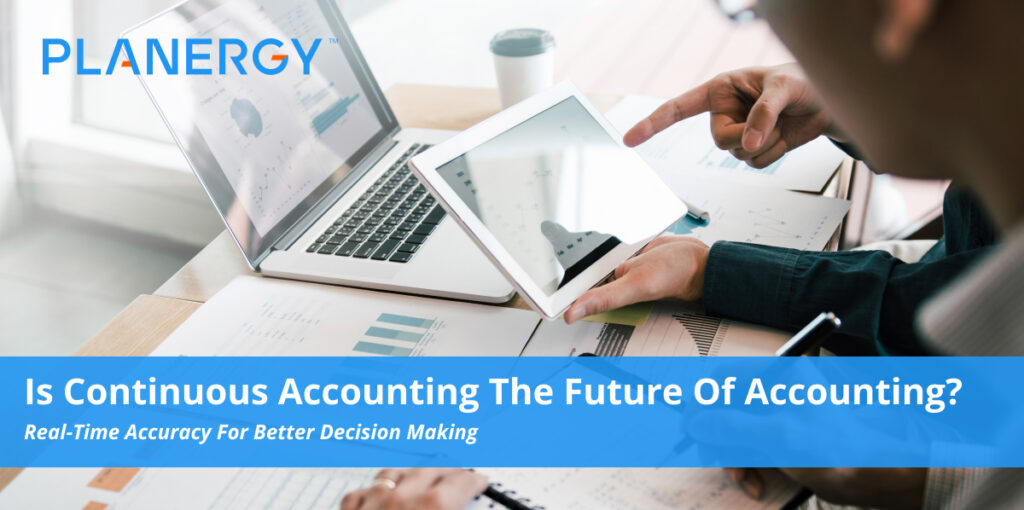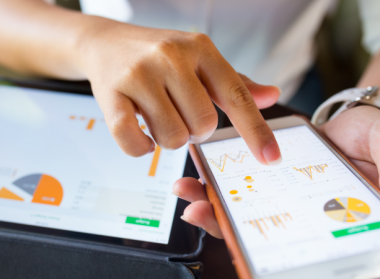The accounting process was never designed for efficiency. In traditional accounting, businesses are forced to wait until month end to enter all of their accounting transactions, often using spreadsheets to run reports.
In many cases, manual processes and a time-consuming month-end close process remain a burden suffered by accounting departments and bookkeepers regularly.
And because of this focus on the month-end close process and period-end tasks, your accounting team has limited access to accurate reporting before closing the accounting period.
To make matters worse, the time spent on month-end closing can quickly add up, leaving you short-staffed for days, while your employees struggle to handle stacks of bills, invoices, receipts, and bank reconciliations, while you end up with a historical view of your accounting transactions that don’t reflect your actual current balances.
For example, if you close the month of January on February 5th, your general ledger balance will reflect your account balances as of January 31, not taking into consideration how much money you’ve disbursed or collected the first five days of February.
If you’re using cloud-based accounting software such as QuickBooks, FreshBooks, or Xero, you’re already using a form of continuous accounting if you’ve connected your banking institutions to your software.
This connectivity automatically updates your accounts daily, such as reducing your bank balance when a bill has been paid or increasing the balance when a deposit has been received.
If you’re tired of spending days reconciling accounts and entering journal entries, you may be a good candidate for continuous accounting.
What is continuous accounting?
While traditional accounting methods complete the majority of processes at the end of an accounting period, whether it’s monthly, quarterly, or yearly, continuous accounting leverages new technology to automate the majority of repetitive tasks that make up the majority of the month-end close process.
Though some manual tasks will remain, automating the majority of previously manual processes increases accuracy, while reducing workloads; freeing up accountants and bookkeepers for more important tasks.
But perhaps the most important benefit finance professionals receive from using continuous accounting is that rather than performing the majority of accounting tasks at month-end, accounting transactions are completed throughout the accounting period, providing businesses with a real-time look at their finances throughout the month, rather than waiting until transactions have been posted at month-end.
For example, when you use an electronic method to pay a bill, such as an ACH transfer or an electronic check, using continuous accounting, you can immediately account for that expense, rather than waiting until you receive your bank statement to post the expense.
This immediacy allows you to view all of your account balances in real-time rather than waiting until month-end to update your account balances.
Continuous accounting is not perfect.
There will always be adjustments that will need to be processed manually.
But they will be far fewer if you use continuous accounting to manage your transactions throughout the month.
Advantages of using continuous accounting
These are just a few of the advantages of using continuous accounting in your business.
Error reduction –
Processing transactions manually always raises the possibility of errors. Using continuous accounting, transactions are entered as they occur, rather than at month-end, increasing data integrity while reducing errors.
Real-time data –
You spend hours if not days processing all of your month-end transactions only to take a look at reports that provide you with historical balances – not current ones. Continuous accounting provides you with real-time financial reporting data, allowing you to make more informed decisions.
A more streamlined workflow –
If you or your employees spend the majority of your time entering your accounting transactions the last week of the month, continuous accounting can eliminate the bottleneck, providing a more streamlined and consistent workflow throughout the month.
Better analysis –
To analyze financial data properly, you need access to both historical and current data. Continuous accounting provides you access to both.
More informed decision-making capability –
When making key business decisions, you want to have access to real-time numbers, not just historical data.
The continuous close is part of continuous accounting and refers to the ability to continuously ‘close’ your accounts throughout the accounting cycle.
What is the continuous close?
The continuous close is part of continuous accounting and refers to the ability to continuously ‘close’ your accounts throughout the accounting cycle.
Though the terms continuous accounting and continuous close are often used interchangeably, continuous close focuses strictly on the ability to perform a “soft close” at any time, rather than at month-end.
Using automation and integrated technology, the continuous close records transactions as they occur, not at the end of the accounting period.
This process ensures that account balances are accurate and not over or understated: a frequent occurrence when using a more traditional accounting system.
Advantages of the continuous close
Like continuous accounting, the continuous close offers numerous advantages to businesses including the following.
Improved data accuracy:
Mistakes happen, and as long as you’re using manual transaction processing, the likelihood of errors remains high. But even after automating the majority of your processes, mistakes still happen, albeit infrequently. But using a continuous closing, those mistakes are more apt to be caught immediately rather than continue for numerous accounting periods.
Better fraud detector:
When you’re able to review transactions and account balances daily, you’re much more likely to spot potentially fraudulent transactions.
Soft closes:
The need to perform a soft or on-demand close may be infrequent, but if you need to provide documentation to your bank for a loan or an investor wants to see current financial statements, you’ll be able to provide those in a snap, with completely current data.
Reduced staff burnout:
No one will happier with continuous closing than your accounting staff, who can now spend their time doing accounting work rather than repetitive tasks that can dull the senses.
Better compliance:
Accounting and compliance go hand in hand, and using continuous closing offers a level of transparency that traditional accounting does not, making it much easier for a business to become and remain compliant with relevant accounting statutes.
Continuous financial management
Planning for and managing business finances is not something that can be done once a year, or even once a month. Instead, it should be a continual process.
This is particularly important when budgeting or forecasting. Would you rather use last period’s accounting numbers or numbers that reflect up-to-date information?
While traditionally, budgets and forecasts have been prepared at year-end for the upcoming year, isn’t it better to prepare a budget that can adjust in real-time to your current income and expense levels?
For example, Mark is the CFO of Woodworks; a multi-million dollar business that manufactures wood flooring.
Mark, along with his department heads, begin to prepare the 2022 budget in November, using the numbers from their latest financial statements, which were run in October.
What those numbers don’t reflect is that pricing for the wood planks necessary for manufacturing their products has gone up in price in the last month.
Demand has also risen, requiring a significant amount of overtime from the factory employees.
While the head of manufacturing is present in the meetings, he has little access to the total increased labor costs or the increased cost of lumber itself.
This lack of knowledge results in a budget that is wildly inaccurate for the upcoming year, severely understating both the cost of supplies as well as the cost of labor required to produce a finished product.
This inaccuracy leads to a misstated cost of goods sold, effectively reducing Woodworks’ profit for 2022.
If Mark’s business was using continuous accounting, his staff would be able to produce a financial statement in real-time that would reflect both the increased cost of supplies as well as the increased labor costs, allowing them to prepare a budget or financial forecast that includes both.
How to switch to continuous accounting
If your business is still bogged down in manual systems, it might be time to consider making the switch to continuous accounting. Implementing continuous accounting is quite easy if you follow these simple steps.
Make the move to the cloud
If you’re already using cloud-based accounting software, great. If not, you’ll want to take this first step. Continuous accounting relies on automated technology, meaning that to automate your accounting processes, you’ll first have to be cloud-based. Another benefit of moving to the cloud is enabling the entire finance team to work from any location.
Connect your bank accounts to your accounting software
This is a simple step and one that most accounting software applications offer. By connecting your bank accounts to your financial system, you’ll be able to account for monetary transactions in real-time, which will be reflected in your account balances.
Institute some real-time spending insights
Particularly important for businesses that purchase a large number of supplies for their business, such as manufacturers or distributors, automating your spending, from the initial purchase order to the vendor payment can go a long way towards providing an additional level of transparency while also keeping your books up to date in real-time.
Use integrated technology
It’s pointless to purchase a spend management software application if it doesn’t integrate with your accounting or ERP system. Creating a truly integrated system reduces the number of manual transactions you need to process regularly, increases accuracy, and eliminates the need to enter data into two or more separate applications.
Robotic process automation and artificial intelligence are the future of accounting.
Happily, this new approach to accounting tasks is available regardless of what accounting calendar your business operates on.
And once you get started with continuous accounting and process automation, you’ll never look back.




